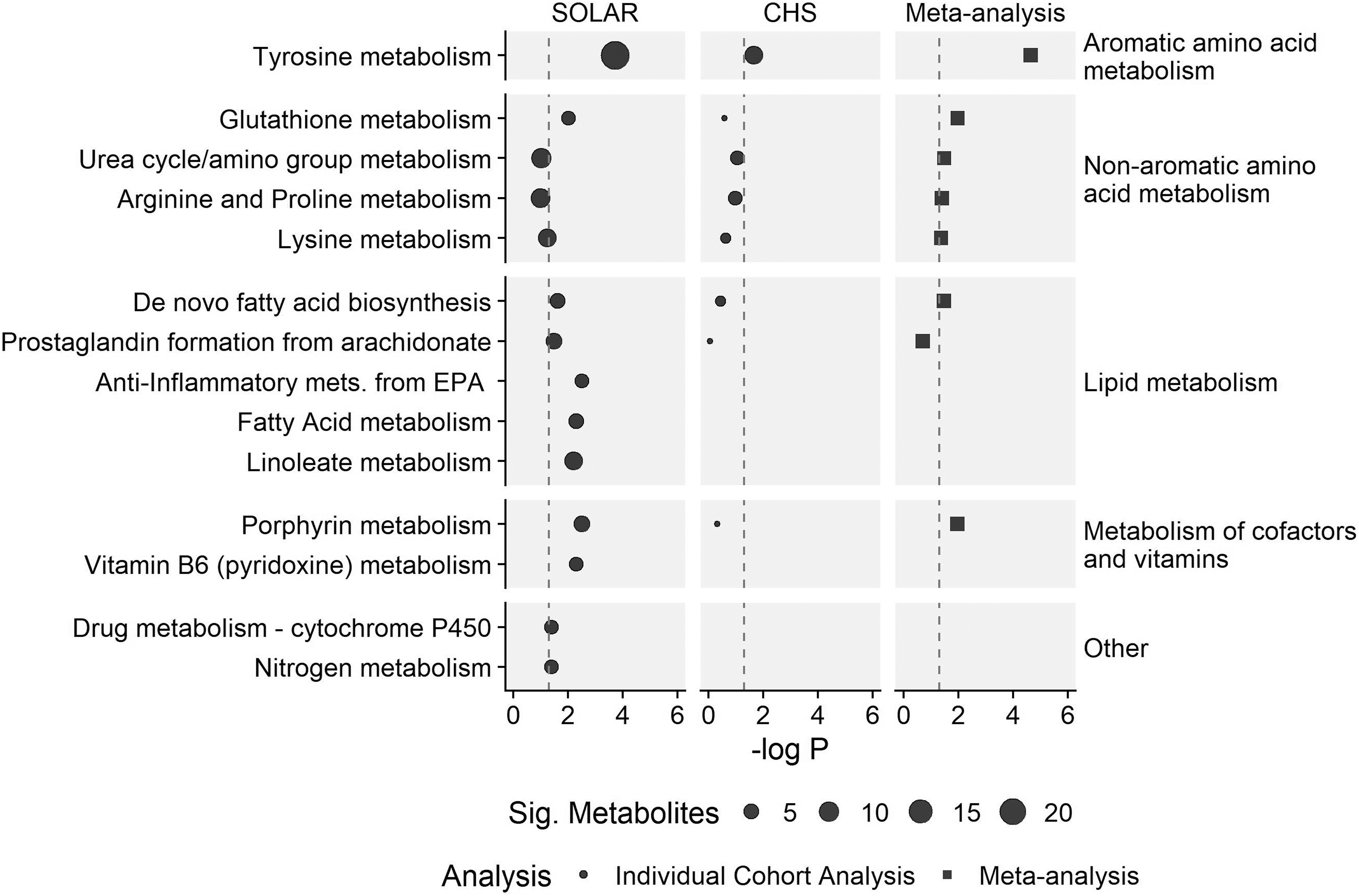Figure 1.

Metabolic pathways associated with exposure to a mixture of six PFAS in adolescents from the SOLAR cohort () and young adults from the CHS cohort (). Metabolic pathways are grouped into super pathways as indicated on the right of the plot. Meta-analysis values are provided for pathways identified as being associated with PFAS in both cohorts. Dot size for the SOLAR and CHS cohorts are proportional to the number of significant metabolites associated with each pathway. Only pathways that were significant in either the SOLAR cohort, the CHS cohort, or the meta-analysis are presented here; for complete results see Table S3. Note: CHS, Children’s Health Study; EPA, eicosapentaenoic acid; PFAS, per- and polyfluoroalkyl substances; Sig, Significant; SOLAR, Study of Latino Adolescents at Risk.
